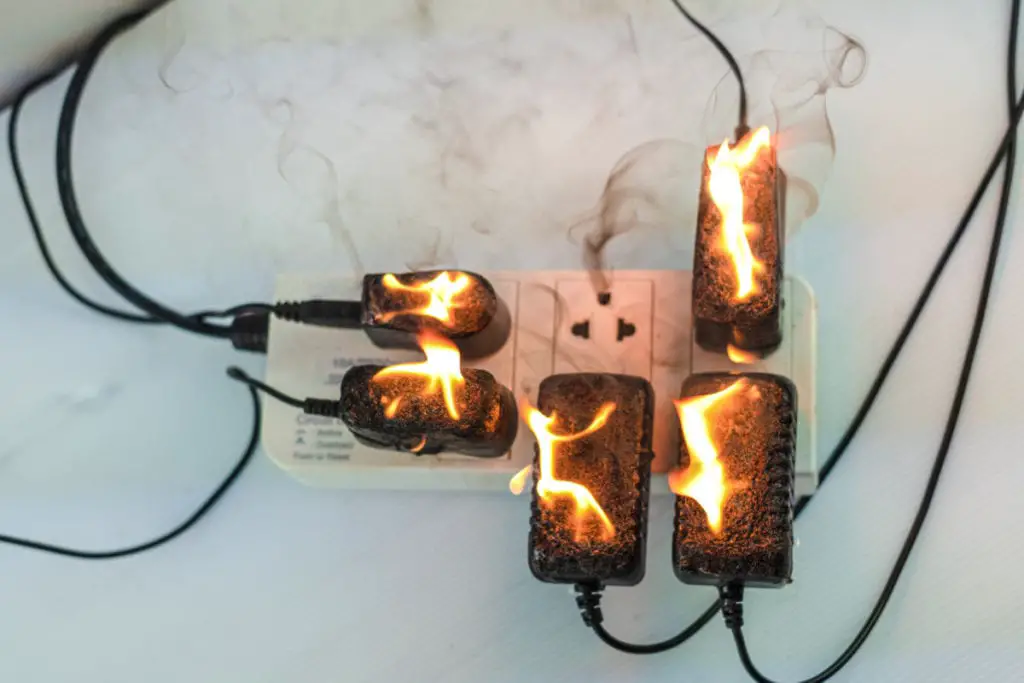Throughout all the rooms of your home, there are electric outlets, panels, and breaker boxes. Electricity pulses through our lives, bringing light and power to every moment of our lives. Safety with electricity is crucial to its continued use and enjoyment, and GFCI’s protect you from electric shock and lighting fires.
GFCI stands for ground-fault circuit interrupter and is part of an electric outlet. It is a device that stops the electricity when an imbalance happens between hot and neutral electric lines. It does this by comparing the electricity going to and returning from what is plugged in.
It is important to understand how GFCI’s work, where they come from, and how they can be of use to you in your home.
A Brief History
As a brief history of the GFCI, examining how it came about gives great insight into its importance. “It was designed by Charles Dalziel in 1961. Mr. Dalziel was a professor of electrical engineering at UC Berkeley and wrote The Effects of Electric Shock on Man, a treatise that explained the effects of varying amounts of electricity on humans. Mr. Dalziel apparently knew a thing or two about how much electricity it took to kill a person and developed a device designed to protect human lives” Source.
Why are GFCI’s necessary?
Not only are ground-fault circuit interrupters required in many places, but having them is a major staple in the protection and safety department. Not only do they detect imbalances, but they protect the entire electrical system within your home. They protect your family from the chance of electric shock, and they protect your house from the chance of lighting on fire if something wrong were to happen.
How Does GFCI work?
In order to understand why a GFCI works, it is important to understand the setup of electrical words and the setup of an electrical outlet.
“All electricity attempts to return to its original source. In other words, when an electrician refers to a circuit, he is talking about electricity leaving your panel, flowing through the insulated wires in your house to supply power to any energized items, and then following a return path back to the panel” Source.

Obviously, an outlet normally contains three holes. The hole at the top left, the longer blade hole is where the neutral electric line links back to your panel. The right side whole, the shorter blade, it is your hot line. It normally contains 120 volts of power. The third hole at the bottom is your ground line.
The power coming out of the right side (hot), must be returned to the left (neutral) side. An imbalance occurs when whatever is plugged in, like a hairdryer or shaver, comes in contact with water. This releases part of the electric current into the water, grounding it. That expelled power now fails to return to the neutral side.
Without a GFCI, this can cause the burning of the hot side, often causing house fires or electric shock. A GFCI that properly regulates the current will detect this imbalance and switch of the circulate in 1/40th of a second.
Simply put, a GFCI detects that imbalance, trips the power, and potentially saves you from hazardous results. “Think of a GFCI as a small, extra-sensitive circuit breaker built right into an outlet to protect you against electrocution” Source.

Where is a GFCI needed?
There are requirements put out by the National Electrical Code (NEC) which determine where a GFCI is required. Mostly, they are required in places where water is present, for example, they are found within six feet of a sink or bathroom tub and shower. Normally, they are found in:
- Bathrooms
- Kitchens
- Laundry rooms
- Utility rooms
- Unfinished basements
- Garages
- Crawlspaces
- Spa and pool areas
- Boathouses
- Areas where heating, AC, and refrigeration equipment is installed
According to homedepot.com “GFCI protection is required for 125-volt to 250-volt receptacles supplied by single-phase branch circuits rated 150 volts or less to the ground” Source.
The NEC puts out new updates regarding GFCI’s occasionally. Every three years they make revisions to their rules and standards dependent upon new things happening. Their last set of standards was released in 2020, and more are planned to be released in 2023. For example, in 2020 they added outdoor areas and finished and unfinished basements to places in need of GFCI’s. If you have an opinion, they do take public input into the revision process.
In addition to the national code, local codes may also require GFCI’s in additional places. Look up the code specific to your state or municipality in order to know for sure which codes apply to your home.
How do you test a GFCI?
GFCI’s can be an incredible source of protection if they are working properly and tested occasionally to ensure that. GFCI’s should be tested once a month to ensure their actually working and will stop a deadly shock before it occurs. A GFCI will come equipped with two different buttons between the two outlets, a RESET button, and a TEST button. These can be used to ensure that the outlet is working properly.
To start, push the RESET button on the GFCI to get a fresh start for your test.
Then, plug something into the outlet, a light would work best in order to see the electricity. Suggested is a small night light. Once you have plugged it in, it should light up as normal.
Next, push the test button, and immediately, the night light should turn off, indicating that the GFCI stopped the current as you pushed the button. If the light does not go out, you know that the GFCI you have installed is not working.
Once you have finished the test, be sure to hit the RESET button once again so that the outlet is back to its original state. If necessary, change out the GFCI so that your home and family are more protected. Below, is a great video demonstration of how to test it following these same steps. Periodic testing is important to maintain!
What happens if the GFCI trips?
If the GFCI is tripping, it is most likely doing its job, which is a good thing. A good way to check and see what is happening is to get the opinion of an electrician, but “before calling an electrician, you may want to try this simple diagnosis: Unplug all appliances plugged into or down circuit from the GFCI, reset your GFCI by pushing the button in the center of the outlet and then plug the appliances back into the GFCI one at a time and turn them on to see if any of the appliances are causing the appliance to “trip”. If you plug in your coffee maker and the GFCI immediately trips, it is likely you have a faulty appliance and the GFCI is operating as designed” Source.
Appliances do get old and worn out, so they can definitely be the source of the trip. One important thing to remember is that just because the outlet still works, it does not mean that the GFCI is working. While newer models include a feature that stops the flow of power if the GFCI is not working, older models will not turn off and should be tested frequently to ensure their workability.
“If the GFCI outlet is tripping often, it probably needs further investigation by a certified electrician as it could also be a result of worn-out insulation, accumulated dust, or deteriorated wiring” Source.

How do you wire a GFCI outlet for garbage disposal?
You are probably curious if GFCI’s are required for garbage disposals, and the answer according to the NEC is no, they are not required, but they are a great option regardless because of the closeness garbage disposals have with water. Local codes sometimes may require them.
In order to install a GFCI for garbage disposal, you will need an electrical box that is within the reach of the garbage disposal cord. Normally, it cannot share an electrical box with other appliances, unless the electrical box is 20 amps, and is shared with something like a dishwasher. It will require a 10 or 15 amp power box. Screw the box to the wall, ensuring there is a hole you can feed the electrical cable through.
Once you have done this, and fed through the wires, using a wire stripper, take 1/2 inch of plastic away and separate the wires. There should be three, a black one, a white one, and a bare one (the ground wire). Pulling out your GFCI outlet, you will see two terminals called “line” and “load.” Connect the black wire to the “line” terminal. Finally, push the cable into the electric box and screw the outlet to the box.
GFCI’s have helped improve homes, bathrooms, sinks, and garbage disposals since their beginning and they will continue to be improved in order to decrease the chances of electric shock.
Related Topics:
IIf you like the article above, here are some other similar articles you should check out!
Do Garbage Disposals Need GFCI?
Best Spring Loaded Touch Bar Trash Cans for Home and Office Spaces
